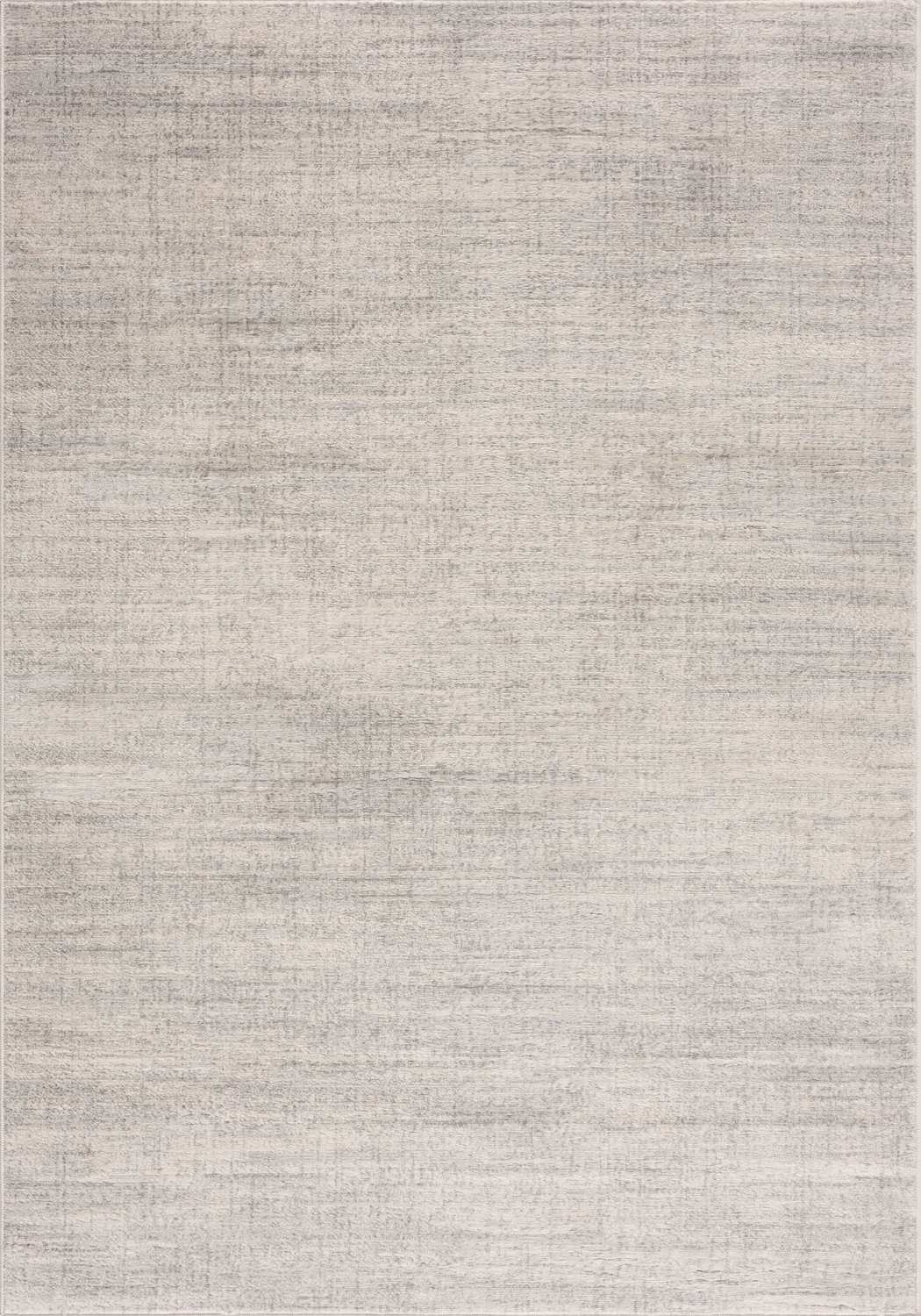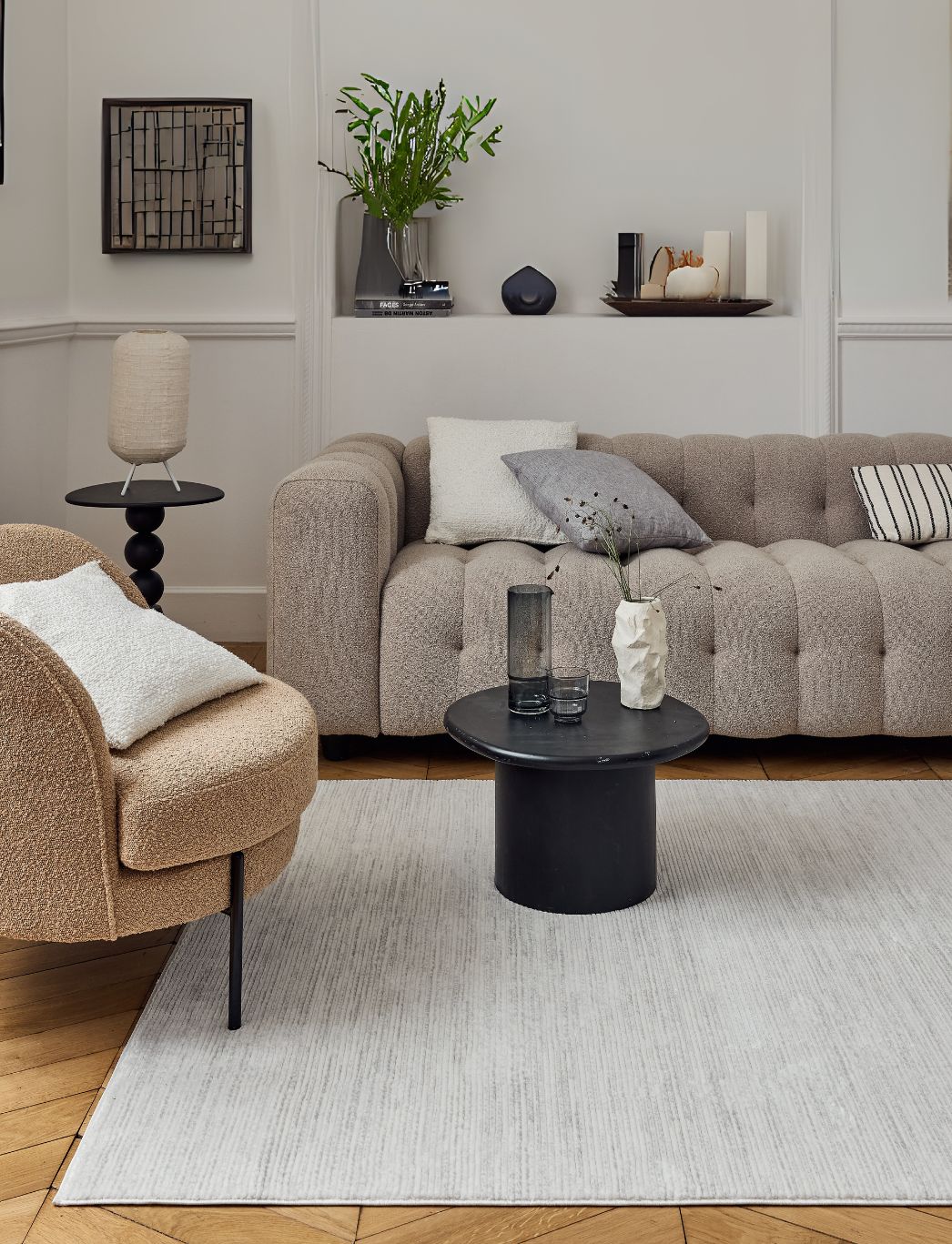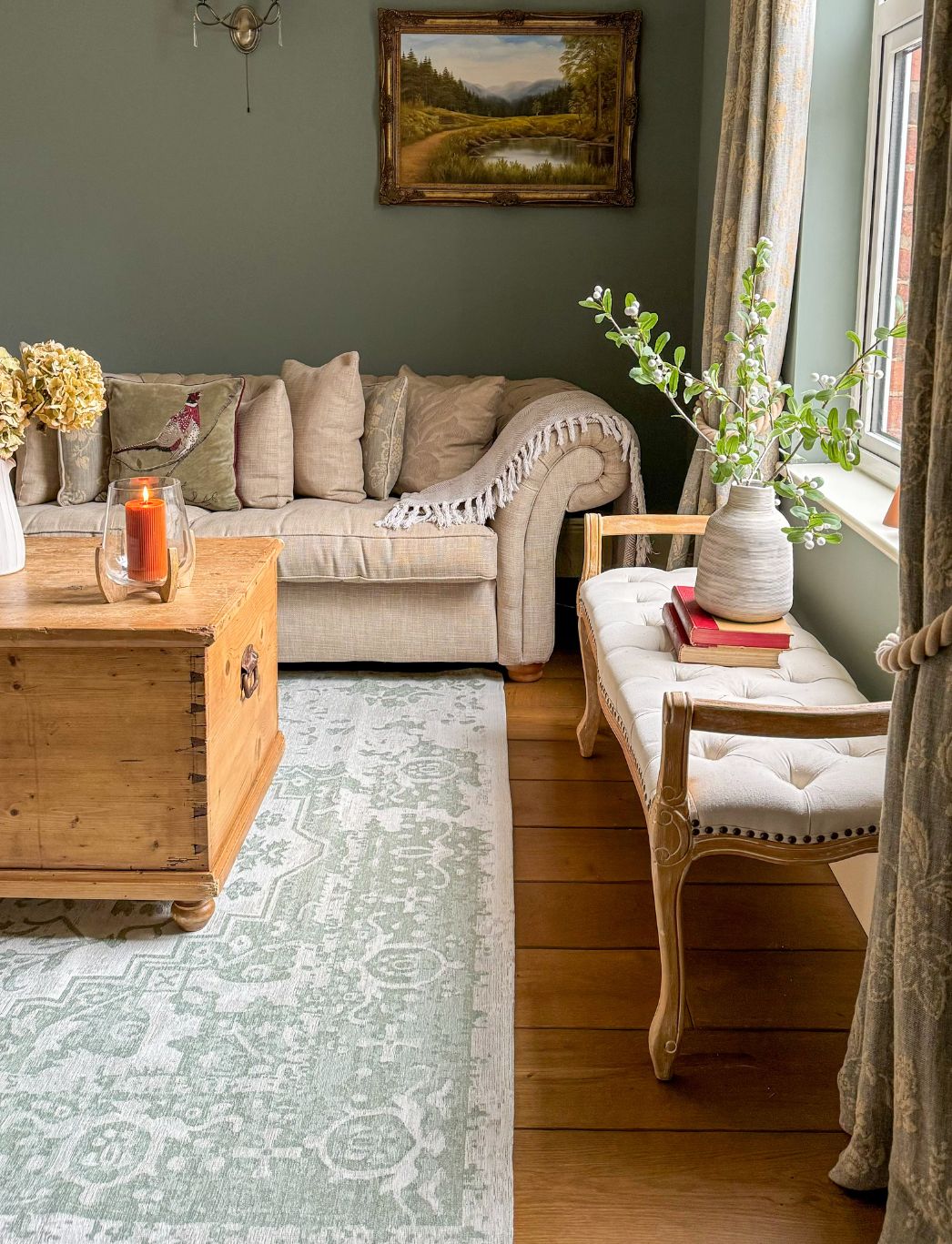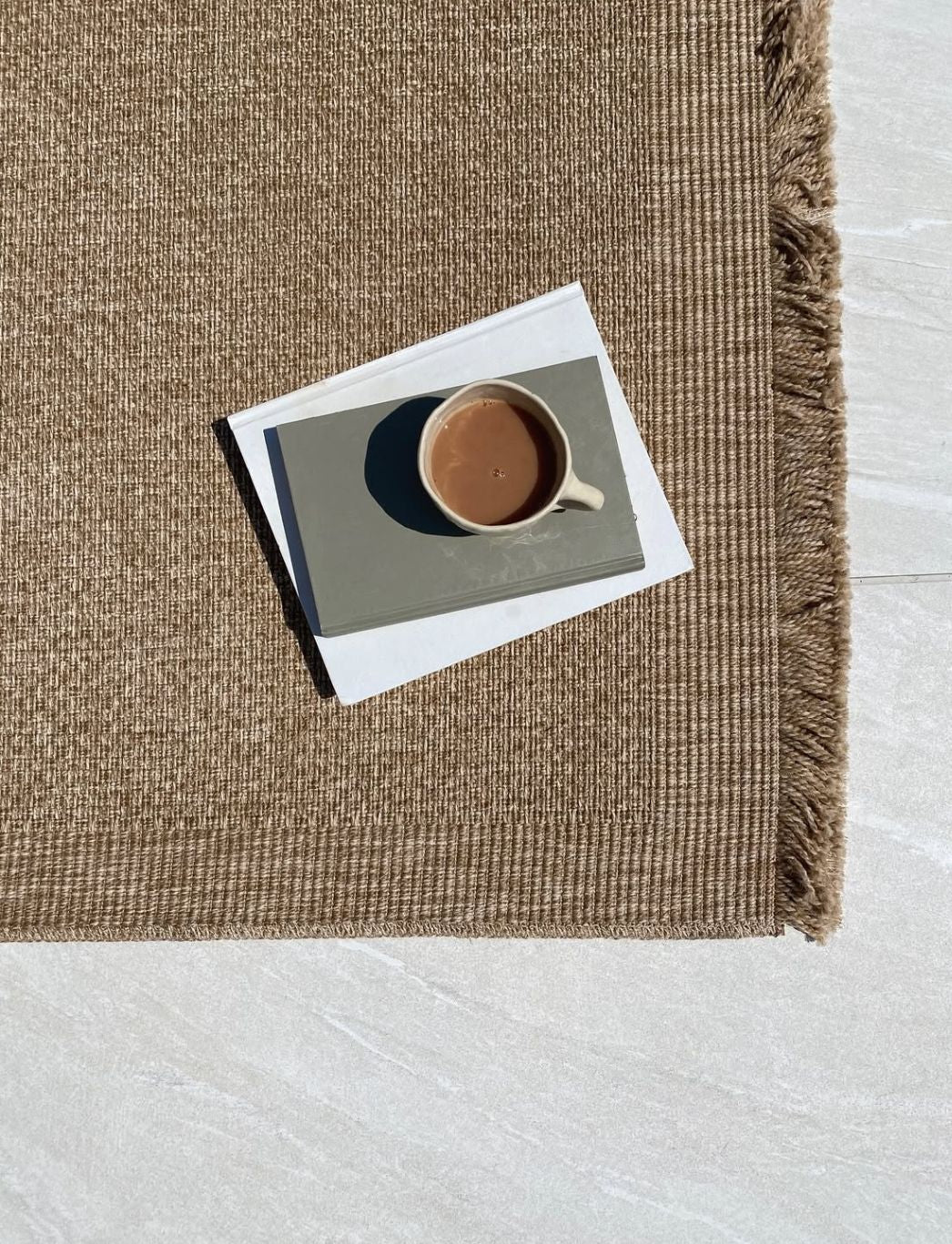4 Steps to Repair Laminate Flooring That Has Peaked
Laminate floors can take your home’s aesthetic appeal to the next level. But if they peak, they can leave the wrong impression and cause tripping accidents.

How to Repair Laminate Flooring That Peaks
If your laminate floors are peaking, the floorboards are pushing against one another along the seam creating a lump. This usually occurs when the boards don’t have enough room to expand and contract as the temperature fluctuates.
Use these steps to fix these peaking floorboards.
Step 1 – Find the Underlying Issue
Peaking happens when there is no gap between the walls and the floor, the gap is too small, and the mouldings are attached to the floor. To determine the issue, follow the peaking boards to the wall and look for a gap of 0.25 inches or more. Also, check for glue and nails that may have come out from the boards.
Step 2 – Fix the Moulding
Remove the nails or glue if the mouldings and floorboards are attached. If there is no expansion gap, make one by cutting a section between the walls and the floor using spacers. Replace the moulding to finish the job.
Step 4 – Fix the Peaked Boards
Once you have taken care of the underlying moulding issue, place a heavy item on the peaked boards for a few days or till they settle.
When You Should Call a Professional
Laminate flooring stands out because of the extra protective layer that prevents scratches and ensures it lasts for years. But that doesn’t mean it is immune to damage. You can fix some issues using our guide, but call professionals if:
- You are working in or have a house that has settled and has extremely uneven floors. An expert can tell you if fixing the flooring is a good idea or if you should replace it.
- A significant part of the flooring needs to be replaced or repaired, and you are dealing with tight spaces. An experienced professional knows how to overcome those challenges and restore the floor.
Preventing Damage
After repairs or after getting new laminate flooring, prevent damages by following these tips:
- Clean the floor regularly to prevent dirt and dust build-up that can cause scratches.
- Place adhesive pads underneath heavy furniture, so the legs don’t scratch the floor. Even tiny movements can cause damage.
- While vacuuming, use attachments that don’t have a brush at the end.
- Keep your pet’s claws trimmed, so they don’t scratch the floor.
- Place carpets and runners throughout the room.
Laminate flooring can increase your home’s value, provided it remains in pristine condition. Use our guide to ensure this.
Laminate Flooring Repair Kit: Essential Tools for DIY Fixes
A comprehensive laminate flooring repair kit is a must-have for any homeowner. These kits typically include colour-matched fillers, wax sticks, and application tools. Look for kits with a wide range of colours to ensure a perfect match for your flooring. Some advanced kits may include laminate cleaners and sealants for comprehensive care. When selecting a kit, consider the specific issues you're facing, such as scratches, chips, or gaps between planks. A good repair kit can significantly extend the life of your laminate flooring and maintain its appearance.

How to Repair Chipped Laminate Flooring: Step-by-Step Guide
Repairing chipped laminate flooring is a manageable DIY task with the right approach. Start by thoroughly cleaning the damaged area to remove any debris. Use a colour-matched filler or wax stick from your repair kit to fill the chip. For deeper chips, you may need to build up layers of filler. Once filled, use a plastic scraper to level the surface, ensuring it's flush with the surrounding flooring. Allow the filler to dry completely before gently buffing the area with a soft cloth. For a seamless finish, consider applying a thin layer of clear nail polish or laminate sealant over the repaired area.
How to Repair Laminate Flooring Water Damage: Salvaging Your Floors
Water damage to laminate flooring can be serious, but quick action can often save your floors. First, remove all standing water and use fans to dry the area thoroughly. For minor swelling, try placing a heavy weight on the affected area once it's dry to flatten it. If the damage is more severe, you may need to remove and replace the affected planks. Always check for mould growth under the flooring, as this can pose health risks. In some cases, using a dehumidifier in the room for several days can help draw out residual moisture. Prevention is key, so consider applying a water-resistant sealant to your laminate flooring in moisture-prone areas.
Repair Laminate Flooring Near Me: Finding Local Expertise
When DIY repairs aren't feasible, finding a professional to repair your laminate flooring is crucial. Start by searching online for "laminate flooring repair specialists" in your local area. Look for professionals with positive reviews and examples of their work. Many flooring retailers offer repair services, so check with the store where you purchased your flooring. Ask potential repairers about their experience with your specific type of laminate and request a detailed quote. Don't forget to inquire about warranties on their repair work. Local handyman services may also offer laminate flooring repairs at competitive rates.
How to Fix Laminate Flooring That is Lifting: Restoring a Smooth Surface
Lifting laminate flooring can be unsightly and potentially dangerous. Start by identifying the cause of the lifting, which could be moisture, improper installation, or temperature changes. For minor lifting, try using a rubber mallet to gently tap the planks back into place. If this doesn't work, you may need to remove the baseboards and trim the expansion gap to allow the flooring to settle. For persistent issues, consider using flooring adhesive to secure the lifting planks. In severe cases, you may need to remove and reinstall the affected section, ensuring proper expansion gaps are maintained.
Laminate Floor Repair Putty: Filling Gaps and Cracks
Laminate floor repair putty is an excellent solution for filling small gaps, cracks, and chips in your flooring. Choose a putty that matches your floor colour as closely as possible. Before applying, ensure the area is clean and dry. Use a plastic putty knife to apply the putty, pressing it firmly into the gap or crack. Smooth the surface and remove any excess putty immediately. Allow the repair to dry completely before walking on it. For a seamless finish, consider using a laminate floor polish over the repaired area once it's fully cured. Remember, putty works best for small repairs and may not be suitable for larger damage.

Laminate Repair: Comprehensive Solutions for Common Issues
Laminate repair encompasses a wide range of techniques to address various flooring issues. For scratches, use a colour-matched repair pen or wax stick. Chips and dents can be filled with putty or wood filler. Loose planks may require re-clicking or gluing down. For water damage, thorough drying and possible plank replacement are necessary. Always start repairs by cleaning the affected area thoroughly. Keep a repair kit on hand for quick fixes. For extensive damage or if you're unsure, consult a professional to ensure the longevity of your laminate flooring.
How to Repair Swollen Laminate Flooring Without Replacing: Salvage Techniques
Repairing swollen laminate flooring without replacement can be challenging but is possible in some cases. Start by thoroughly drying the affected area using fans and dehumidifiers. Once dry, try using a heavy weight or sandbags to flatten the swollen areas over several days. For minor swelling, a hair dryer on low heat can sometimes help reduce the swelling, but be cautious not to overheat the laminate. If these methods don't work, you may need to cut out the swollen section and replace it with a new piece. To prevent future swelling, consider applying a water-resistant sealant to your laminate, especially in moisture-prone areas.

How to Fix Laminate Flooring That is Lifting: Restoring a Smooth Surface
Addressing lifting laminate flooring is crucial for both aesthetics and safety. Begin by identifying the root cause of the lifting, which could be moisture ingress, improper installation, or temperature fluctuations. For minor lifting, use a rubber mallet to gently tap the planks back into place. If this proves ineffective, you may need to remove the baseboards and trim the expansion gap to allow the flooring to settle properly. For persistent issues, consider applying flooring adhesive to secure the lifting planks. In more severe cases, you might need to remove and reinstall the affected section, ensuring proper expansion gaps are maintained throughout.
Laminate Floor Bulging Upwards: Causes and Solutions
Laminate flooring bulging upwards is often a sign of underlying issues that need addressing. The most common cause is excess moisture, either from spills or high humidity. Start by identifying and eliminating the moisture source. Use dehumidifiers and fans to dry out the area thoroughly. Once dry, you may be able to flatten the bulge by placing heavy weights on it for several days. If the bulging is severe or doesn't respond to these methods, you may need to remove the affected planks and check for damage to the subfloor. When reinstalling, ensure proper expansion gaps are left around the room's perimeter to allow for natural expansion and contraction.
How to Replace a Laminate Floor Board in the Middle of a Floor: Precision Repair
Replacing a laminate floorboard in the middle of a floor requires precision but is achievable with the right approach. Start by marking the damaged board and using a circular saw set to the exact thickness of the laminate to cut it out. Make relief cuts to remove the centre of the board, then carefully pry out the edges. Clean the exposed area thoroughly and check the underlayment for any damage. Cut a new board to fit, ensuring it's the same thickness as the original. Apply wood glue to the tongues and grooves of the surrounding boards and carefully tap the new board into place using a tapping block. Use painter's tape to hold it in position while the glue dries.

Laminate Flooring Lifting Due to Water: Prevention and Repair Strategies
Water-induced lifting in laminate flooring is a common issue that requires prompt attention. Immediately remove any standing water and use fans and dehumidifiers to dry the area thoroughly. For minor lifting, you may be able to press the planks back down once they're completely dry. If the lifting persists, you might need to remove the affected planks to allow for proper drying of the subfloor. When reinstalling, ensure you leave adequate expansion gaps around the room's perimeter. To prevent future issues, consider applying a water-resistant sealant to your laminate flooring, especially in areas prone to moisture. Regular inspection and prompt cleaning of spills can also help prevent water-related lifting.
People Also Asked
Can laminate flooring be repaired?
Yes, laminate flooring can often be repaired. Minor damages like scratches or small chips can be fixed with repair kits, while more severe issues may require plank replacement.
Can you replace just one piece of laminate flooring?
It's possible to replace a single piece of laminate flooring. This process involves carefully removing the damaged plank and installing a new one, which can be challenging but is achievable for DIY enthusiasts.
Can you replace one bit of laminate flooring?
Replacing a small section of laminate flooring is feasible. It requires precision and patience to remove the damaged area without affecting surrounding planks.
Can you repair water damaged laminate flooring?
Water-damaged laminate flooring is challenging to repair. In most cases, affected planks need replacement as water damage can compromise the flooring's structural integrity.
How to fix laminate flooring that is separating?
To fix separating laminate flooring, identify the cause (often moisture or improper installation). Use a tapping block and mallet to gently push planks back together, ensuring the locking mechanism engages.
Is laminate flooring easy to fix?
The ease of fixing laminate flooring depends on the issue. Minor repairs like small scratches are relatively simple, while major damages may require professional intervention.
How to fix laminate flooring that is lifting?
Fix lifting laminate flooring by first identifying the cause (often moisture or uneven subfloor). Address the underlying issue, then use weights or adhesive to secure the lifted area.
Do laminate repair kits work?
Laminate repair kits can be effective for minor damages like scratches or small chips. Their success depends on the extent of damage and how closely the kit matches your flooring color.
Can we fix laminate over laminate?
Installing new laminate over existing laminate is not recommended. It can lead to height issues and instability. It's better to remove the old flooring before installing new laminate.
How to fix a gouge in a laminate floor?
To fix a gouge in laminate flooring, use a color-matched repair kit or wood filler. For deep gouges, consider replacing the affected plank for the best results.
Can you use wood filler to repair laminate flooring?
Wood filler can be used for minor repairs in laminate flooring, such as small chips or scratches. However, it may not match the finish perfectly and is not suitable for large damages.
Will water under laminate dry out?
Water under laminate flooring may eventually dry out, but it can cause significant damage in the process. It's crucial to address the water issue immediately and dry the area thoroughly.
How to replace a few pieces of laminate flooring?
To replace multiple laminate planks, start from the nearest wall and carefully remove planks until you reach the damaged ones. Replace the damaged pieces and reinstall the removed planks.
How to fix vinyl plank flooring that is lifting?
For lifting vinyl plank flooring, identify and address the cause (often moisture or temperature fluctuations). Use adhesive or a heat gun to reattach loose planks, ensuring a smooth surface.
Can you fix swollen laminate flooring?
Swollen laminate flooring is difficult to fix and often requires replacement of affected planks. Address the moisture issue causing the swelling to prevent future problems.
How to repair blistered laminate flooring?
Blistered laminate flooring usually indicates water damage and typically requires plank replacement. Address the moisture source to prevent further blistering.
Can you fix gaps in laminate flooring?
Gaps in laminate flooring can sometimes be fixed by adjusting the planks using a tapping block and mallet. For persistent gaps, consider using a color-matched filler or replacing the affected planks.
Can you repair vinyl laminate flooring?
Vinyl laminate flooring can be repaired, depending on the damage. Minor scratches can be filled, while severe damages may require plank replacement.
Do laminate floor repair kits work?
Laminate floor repair kits can be effective for minor damages like scratches or small chips. Their success depends on the extent of damage and color-matching accuracy.
What to do if laminate floor is lifting?
For lifting laminate floors, identify and address the underlying cause (often moisture or uneven subfloor). Use weights or adhesive to secure lifted areas, or consider professional repair for extensive issues.
Can you rejuvenate laminate flooring?
Laminate flooring can be rejuvenated to some extent. Deep cleaning and using specialized laminate floor polish can help restore shine, but severely worn floors may need replacement.
Can laminate flooring be resealed?
Laminate flooring typically doesn't require resealing as it comes pre-sealed. However, you can apply a laminate floor sealant to enhance protection against moisture and wear.
Can you use wood filler on laminate?
Wood filler can be used on laminate for small repairs like chips or scratches. However, it may not match the finish perfectly and is not suitable for large-scale repairs.
How to fix soft spots in laminate flooring?
Soft spots in laminate flooring often indicate water damage or subfloor issues. Address the underlying problem, then replace the affected planks for a proper fix.
What kind of glue for laminate flooring?
For laminate flooring repairs, use a waterproof, flexible adhesive specifically designed for laminate. Avoid using regular wood glue as it can damage the laminate surface.
How long will laminate flooring last?
With proper care and maintenance, laminate flooring can last 10 to 25 years. Factors affecting longevity include quality of installation, level of foot traffic, and maintenance practices.
How to flatten swollen laminate flooring?
To flatten swollen laminate flooring, remove excess moisture immediately. Use a dehumidifier to dry the area thoroughly. For minor swelling, try placing heavy objects on the affected area for 24-48 hours. In severe cases, replacing the damaged planks may be necessary.
Can you fix a section of laminate flooring?
Yes, you can fix a section of laminate flooring. Identify the damaged planks and carefully remove them using a circular saw. Then, install new planks in their place, ensuring they click together properly. This method preserves the rest of the floor while addressing localized damage.
How do you repair laminate flooring without replacing it?
To repair laminate flooring without replacement, try these methods:
- Use wood filler for small scratches or chips
- Apply laminate repair paste for larger damages
- Use a color-matched repair kit for deep scratches
- Reattach loose planks with laminate floor glue
Can you fix bubbled laminate flooring?
Fixing bubbled laminate flooring is challenging but possible. Reduce moisture in the room using a dehumidifier. For small bubbles, try applying heat with an iron over a towel, then placing weight on the area. For severe bubbling, replacing the affected planks is often the best solution.
How do you fix laminate flooring that is lifting?
To fix lifting laminate flooring:
- Identify the cause (usually moisture or improper installation)
- Dry the area thoroughly if moisture is present
- Apply pressure to minor lifting with heavy objects
- Use laminate floor glue for persistent lifting
- Replace planks if the lifting is severe or recurring
Does laminate flooring expand with water?
Yes, laminate flooring does expand when exposed to water. The fiberboard core absorbs moisture, causing swelling and warping. This is why it's crucial to clean up spills immediately and maintain proper humidity levels in rooms with laminate flooring.
Can I use wood filler to repair laminate flooring?
Wood filler can be used for minor repairs on laminate flooring, such as small scratches or chips. Choose a color-matched filler for best results. However, for larger damages or structural issues, wood filler is not a suitable solution, and plank replacement may be necessary.
Can you use an iron to fix laminate flooring?
An iron can be used cautiously to fix minor bubbling in laminate flooring. Place a damp towel over the affected area and iron on low heat. This technique can help reactivate the adhesive and flatten small bubbles. However, use extreme caution to avoid further damage from excess heat or moisture.
Is laminate easy to repair?
Laminate flooring is moderately easy to repair for minor issues like scratches or small chips. However, more significant problems like water damage or severe lifting can be challenging and may require professional intervention. The ease of repair often depends on the extent of the damage and the repair method used.
How to repair swollen laminate flooring?
To repair swollen laminate flooring:
- Remove excess moisture immediately
- Use a dehumidifier to dry the area thoroughly
- For minor swelling, apply pressure with heavy objects
- In severe cases, cut out and replace the damaged planks
- Address the source of moisture to prevent future swelling
What is the best glue for laminate flooring repair?
The best glue for laminate flooring repair is a water-resistant, quick-drying adhesive specifically designed for laminate floors. Look for products labeled as "laminate floor glue" or "floating floor adhesive." These adhesives provide strong bonding while allowing for the natural expansion and contraction of the flooring.
Can you patch up laminate flooring?
Patching laminate flooring is possible but can be challenging to achieve seamlessly. For small damages, use color-matched repair kits or laminate repair paste. For larger areas, replacing entire planks is often the better option to maintain the floor's integrity and appearance.
Can you spot repair laminate flooring?
Spot repairs on laminate flooring are possible for minor damages. Use touch-up markers or fill sticks that match the floor color for small scratches. For chips or deeper scratches, laminate repair kits can be effective. However, extensive damage usually requires plank replacement for the best results.
Why is my laminate floor crumbling?
Laminate flooring may crumble due to several reasons:
- Excessive moisture exposure weakening the fiberboard core
- Poor quality materials or manufacturing defects
- Improper installation, leading to stress on the planks
- Age and wear, especially in high-traffic areas
- Extreme temperature fluctuations causing material breakdown
To prevent crumbling, maintain proper humidity levels, clean spills promptly, and consider professional installation for best results.
How to repair worn laminate flooring without replacing?
To repair worn laminate flooring, try refinishing with a laminate repair kit. Fill scratches with color-matched filler, and apply a new protective coating. For deeper wear, consider replacing individual planks rather than the entire floor.
Can a laminate floor be repaired?
Yes, laminate floors can be repaired. Minor damages like scratches and chips can be fixed with repair kits. For more severe issues, individual planks can be replaced without redoing the entire floor.
How to fix laminate floor with no replacement?
Fix laminate floors without replacement by:
- Using repair putty for small gaps and chips
- Applying laminate filler for scratches
- Resealing edges with silicone caulk
- Cleaning and polishing to restore shine
What glue for laminate flooring?
Use waterproof wood glue or specialized laminate adhesive for repairing laminate flooring. Ensure the glue is flexible when dry to accommodate floor movement and is compatible with your specific laminate type.
Can swollen laminate be repaired?
Swollen laminate can sometimes be repaired. Try drying the area thoroughly and applying pressure to flatten it. For persistent swelling, replacing the affected planks is often the best solution to prevent further damage.
Is it possible to replace part of a laminate floor?
Yes, it's possible to replace part of a laminate floor. Individual planks or small sections can be removed and replaced without disturbing the entire floor. This requires careful disassembly and matching of the new planks to the existing floor.
How to fix laminate flooring coming apart?
To fix laminate flooring coming apart:
- Clean the separated area thoroughly
- Apply wood glue to the tongue and groove
- Press the planks together firmly
- Use painter's tape to hold them in place while drying
- Wipe away excess glue immediately
How to repair laminate damage?
Repair laminate damage by:
- Using repair kits for scratches and small chips
- Filling deeper gouges with putty or wood filler
- Replacing severely damaged planks
- Resealing edges and seams to prevent water damage
- Polishing the repaired area to match the surrounding floor
What will damage laminate flooring?
Laminate flooring can be damaged by:
- Excessive moisture or standing water
- Heavy furniture without proper protection
- Abrasive cleaning tools or harsh chemicals
- Pet claws and high heels
- Direct sunlight causing fading or warping
- Dragging heavy objects across the floor
How to fix laminate flooring that is lifting without replacing?
To fix lifting laminate without replacing:
- Identify the cause (usually moisture or improper installation)
- Dry the area completely if moisture is present
- Apply pressure to flatten the lifted section
- Use wood glue to reattach loose edges
- Weigh down the area until the glue dries
- Consider adding transition strips to prevent future lifting
How much does it cost to fix laminate?
The cost to fix laminate varies widely depending on the extent of damage and repair method. Minor repairs using DIY kits can cost $20-$50. Professional repairs or partial replacements may range from $200-$800 or more, depending on the area size and labor costs.
Is laminate floor easy to replace?
Laminate flooring is relatively easy to replace compared to other flooring types. Its click-lock system allows for simple disassembly and reassembly. However, proper tools and techniques are necessary, and matching existing flooring can be challenging for partial replacements.
How to fix a broken laminate flooring?
To fix broken laminate flooring:
- Remove the damaged plank carefully
- Clean the subfloor and surrounding planks
- Cut a new plank to fit the space precisely
- Apply adhesive if necessary
- Install the new plank, ensuring it's level and secure
- Allow proper drying time before walking on the repaired area
Related Blog Posts
How to Repair Punch Holes in Hollow Doors in 3 Easy Steps
How to Repair Damp Internal Walls
DIY Summer Home Repair Projects: Quick Fixes and Maintenance Tips 🛠️👷♂️










Leave a comment